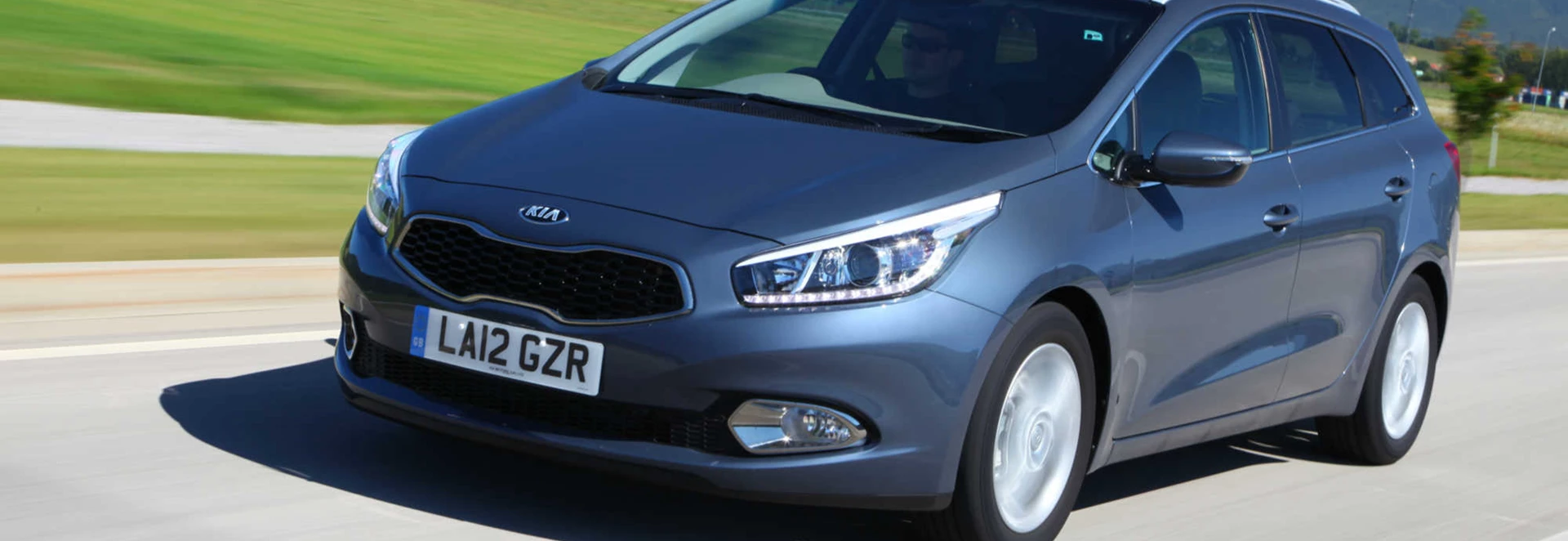The first-generation cee’d was a bit bland when it launched back in 2006, but it was Kia’s way of getting its foot in the door of the European hatchback market.
As an affordable family hatchback, the cee’d is not short of competition, with the likes of the class-leading Ford Focus and Volkswagen Golf occupying the top spots in the segment.
But whereas the cee’d used to be just another affordable hatchback, its facelift towards the end of 2015 gave it a new competitive edge – with a new stylish GT Line trim added and huge improvements to its driving dynamics.
So, with revamped characteristics, has the cee’d now got what it takes to topple the big guns?
The Kia cee’d Sportswagon is an estate car based on the excellent cee’d hatchback and it rivals the Ford Focus Estate and Honda Civic Tourer. It’s also mechanically similar to the Hyundai i30 Tourer, but quite different to look at both inside and out.
With an attractive design and huge 528-litre boot, there’s plenty to like about the Sportswagon. Choose one of its diesel engines and it should also prove to be very cheap to run, while its long seven-year warranty brings peace of mind there should be no unexpected bills.
Performance
The entry-level diesel is a 1.4-litre with 89bhp, propelling the Sportswagon from 0-62mph in a leisurely 13.4 seconds, somewhat off the pace of most rivals. Things improve with the 1.6-litre CRDi with a healthy 126bhp enabling it to cover the same benchmark in 10.8 seconds.
If you plan on driving outside the suburbs, we’d definitely recommend the latter because it can cope far better with demanding routes, motorways and the occasional overtaking manoeuvre.
We’d avoid the 1.4-litre petrol with 98bhp, because it feels underpowered, particularly if you were to fill the Sportswagon with people and their luggage, we suspect. It reaches 62mp in 13 seconds dead.
Every version is fitted with a six-speed manual gearbox, but an optional six-speed automatic is available with the top diesel engine in ‘2’ and ‘3’ trim levels.
Ride and Handling
The engine is smooth and quiet at most speeds and the gearshift is accurate and smooth with a decisive click as each gear engages.
The suspension on the cee'd Sportswagon is particularly worthy of mention. Even when the car is chucked about with no small amount of vigour, it shows little sign of rolling or snaking. High mountain roads with a combination of long sweeping curves, tight corners and occasional unexpected dips or potholes have comprehensively failed to un-nerve the car. The engine is smooth and quiet at most speeds and the gearshift is accurate and smooth with a decisive click as each gear engages. Ride comfort is excellent, partly because most versions are fitted with relatively small 16-inch alloy wheels with high-profile tyres able to soak up rough tarmac and potholes. Only the top ‘4’ and ‘4 Tech’ trim comes equipped with 17-inch wheels.
Interior and Equipment
The Kia cee’d design team was led by Peter Schreyer, the man responsible for the iconic first generation of the Audi TT coupe.
The cabin is spacious and features an attractive dashboard focussed towards the driver. A set of chrome-ringed instruments look sporty and most of the controls are logically laid out. We particularly like the three climate control dials, which wouldn’t look out of place in a premium German model. There’s lots of room for front passengers and rear headroom is reasonable, but six-foot-plus adults may struggle for knee room. The 528-litre boot is quite a bit larger than the Focus Estate (476 litres), but not as large as the Golf Estate (605 litres) or Civic Tourer (624 litres). The back seats split and fold 60:40, but require you to lift the seat bases. Trim levels are somewhat confusingly named ‘1’, ‘VR7’, ‘2’, ‘3’, ‘4’ and ‘4 Tech’. As you’d imagine, ‘1’ is fairly basic, but you do get air-con and steering wheel audio controls. ‘VR7’ adds interior trim upgrades, while ‘2’ notably gets cruise control and ‘3’ adds dual-zone air-con and ‘4’ enhances the interior with leather upholstery, heated front seats and a heated steering wheel.
Cost
The best all-rounder is the 1.6-litre diesel with economy of 64.2mpg and emissions of 116g/km of CO2.
The best all-rounder is the 1.6-litre diesel with economy of 64.2mpg and emissions of 116g/km of CO2, costing £30 in annual road tax. The 1.4-litre diesel is better, managing 67.3mpg and just 109g/km of CO2, but we’d forgo the small savings for better performance. Versions to be avoided are the 1.4-litre petrol (42.9mpg and 148g/km of CO2) and the diesel coupled with an automatic gearbox, reducing economy to 50mpg and increasing emissions to 149g/km. Prices range just over £16k to around £24k, compared with £18k to £26k for a Golf Estate. Kia’s are no longer marketed as being cut-price bargains, with the quality to back up their increased prices. Residual values are looking promising, helped by Kia’s image for reliability and the lengthy seven-year warranty supplied with every car.
Our Verdict
The cee’d Sportswagon is a great family car, with lots of space, an attractive design and impressive levels of equipment. If you are looking for an easy car to maintain, its seven-year warranty also offers peace of mind. We’d avoid the petrol and diesel automatic, but the other engines in the line-up offer low running costs and reasonable performance.




